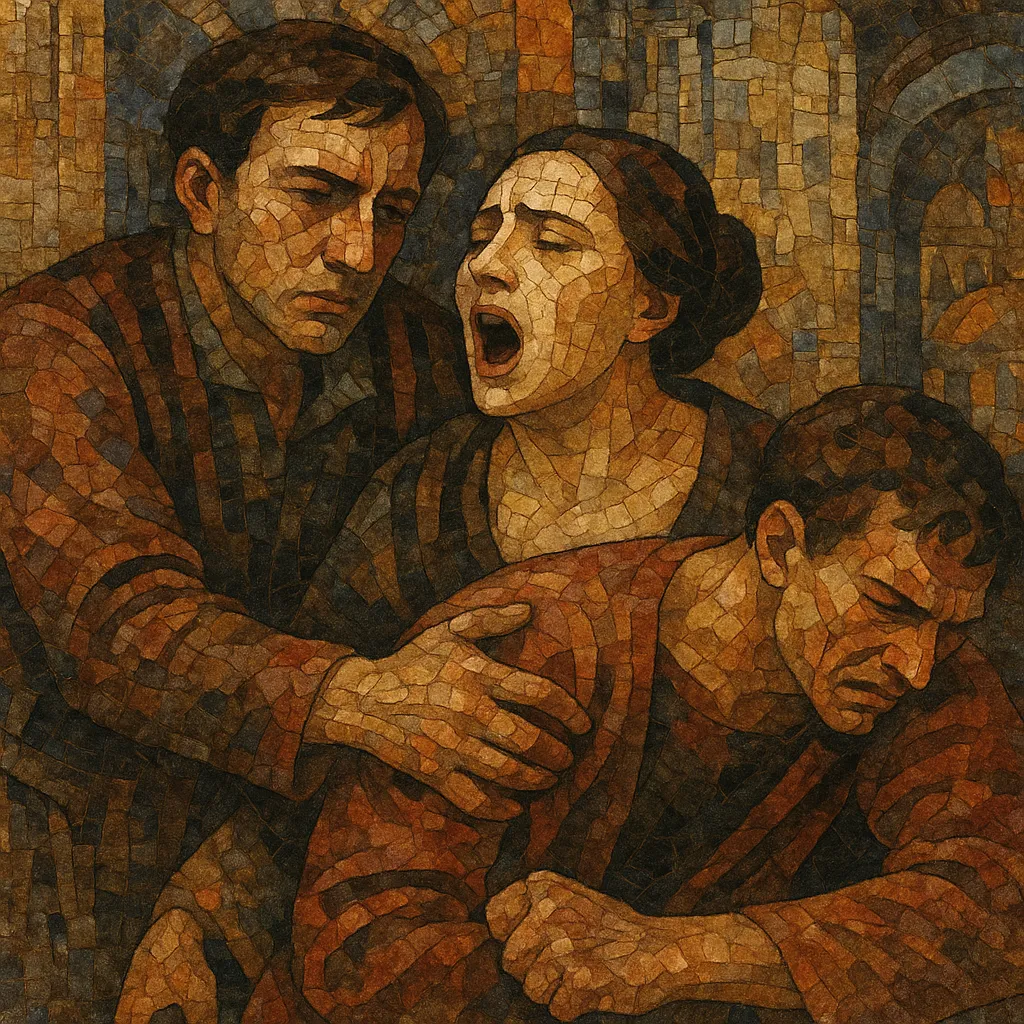Verismo is a late‑19th‑century Italian operatic movement that champions realism: ordinary people in contemporary or recent settings, intense emotions, and vivid, sometimes violent, conflicts.
It favors continuous musical drama with flowing arioso and declamation over display arias, a rich late‑Romantic harmonic palette, and a large, coloristic orchestra that paints psychological and environmental detail (bells, banda, onstage chorus, local dances).
Vocally, it spotlights spinto and dramatic voices capable of sudden dynamic surges, urgent parlando, and soaring lyrical lines that erupt at emotional peaks. The result is taut, cinematic storytelling that feels immediate, visceral, and unabashedly human.
Verismo emerged in Italy in the 1890s as an operatic analogue to literary realism and naturalism (e.g., Giovanni Verga and Émile Zola). Composers sought to depict everyday life—often of working‑class or rural characters—with psychological directness and unvarnished intensity.
French stage works like Bizet’s Carmen (though an opéra‑comique) showed how stark realism, local color, and tragic passion could electrify opera. Within Italy, late‑Romantic harmonic language and the dramatic pacing of post‑Verdi opera laid the groundwork for a tighter, more continuous musical narrative.
The aesthetic crystallized with Pietro Mascagni’s Cavalleria rusticana (1890) and Ruggero Leoncavallo’s Pagliacci (1892): compact, high‑voltage tragedies set among ordinary people. Giacomo Puccini then refined verismo’s balance of lyrical warmth and dramatic realism in La bohème (1896), Tosca (1900), and Madama Butterfly (1904). Umberto Giordano (Andrea Chénier, Fedora) and Francesco Cilea (Adriana Lecouvreur) broadened the style’s reach.
Verismo compressed forms, favoring through‑composed scenes with declamatory arioso, swift tempo changes, and motivic recall rather than long set‑piece arias. Orchestration became more saturated and cinematographic, using leitmotif‑like ideas, harmony rich in chromaticism and modal mixture, and vivid sound effects (organ, bells, banda) to sharpen realism and atmosphere.
Star singers (e.g., Enrico Caruso) and conductors (e.g., Arturo Toscanini) helped codify verismo performance practice: urgent parlando, elastic rubato, and explosive climaxes. Its emotional immediacy influenced 20th‑century opera dramaturgy and film scoring, and its theatrical DNA echoes in rock opera, musical theatre, and operatic pop. Today, verismo remains a core repertory pillar for houses worldwide.
Start with a realistic, tightly focused story about ordinary people facing love, jealousy, poverty, or honor. Set it in a contemporary or recent milieu, and let small causes trigger large consequences.
Favor through‑composed scenes with seamless transitions. Use arioso and parlando to move text quickly, reserving brief, eruptive lyrical spans for emotional peaks. Keep acts compact; intersperse a reflective orchestral intermezzo when useful.
Write late‑Romantic harmonies with chromatic coloration, modal mixture, and occasional pungent dissonance to intensify crises. Employ short, memorable motifs tied to characters or ideas, then develop them flexibly. Let melodies bloom at climaxes but avoid overlong set arias; prioritize expressive immediacy over formal display.
Use a full symphonic orchestra for psychological shading and environment: bell peals, offstage banda, church organ, and folk‑dance rhythms for local color. Double winds and expanded percussion can heighten shock, crowds, or ritual scenes; strings carry intimacy and ache.
Write for spinto/dramatic voices with quick dynamic turns, intense declamation, and soaring top lines. Favor Italianate prosody, clear diction, and emotionally charged verbs and images. Allow parlando for plot propulsion, reserving sustained high notes for decisive moments.
Use flexible tempo (rubato) and swift metric shifts to mirror volatile emotions. Alternate tense ostinati or march‑like pulses for danger with lyrical, breathing cantabile for tenderness. Keep recitative‑like passages rhythmically alive so they never feel static.
Embed specific sights/sounds into the score (street songs, festival bands, church bells). Choral crowds should feel organic and kinetic, not decorative. Ensure dramatic beats turn quickly; every musical event should serve character and story.


